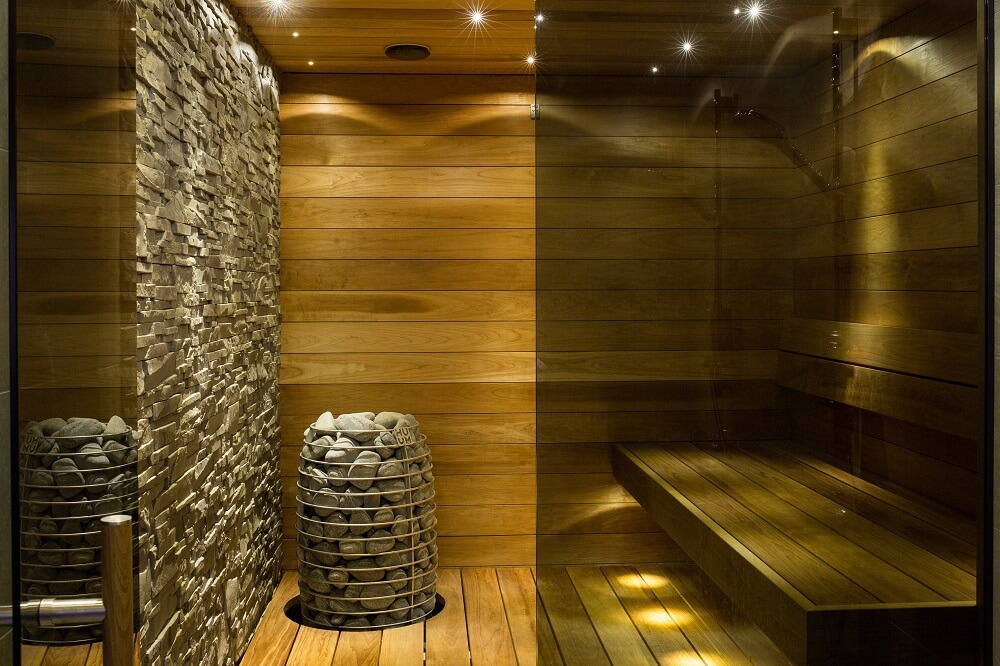Sauna bathing has been a cherished tradition for centuries, offering relaxation and numerous health benefits. A common question among sauna enthusiasts is whether it’s appropriate—and safe—to pour water on sauna rocks. Some believe it enhances the experience, while others warn of potential risks.
In this guide, we’ll explore the history, benefits, risks, and best practices for adding water to sauna rocks, helping you get the most out of your sauna sessions.
Table of Contents
- The Tradition of Pouring Water on Sauna Rocks
- How Pouring Water Impacts Sauna Heat and Humidity
- Benefits of Adding Water to Sauna Rocks
- Potential Risks and Precautions
- Best Practices for Pouring Water on Sauna Rocks
- Frequently Asked Questions
- Conclusion
1. The Tradition of Pouring Water on Sauna Rocks {#tradition}
The practice of adding water to sauna rocks, known as löyly in Finnish culture, has been an integral part of sauna traditions for centuries. The word löyly translates to “spirit of the steam” and represents the burst of humidity that enhances the sauna experience.
In traditional Finnish saunas, throwing water on heated rocks is a common and encouraged practice, creating a hot steam bath that improves circulation and enhances relaxation.
2. How Pouring Water Impacts Sauna Heat and Humidity {#impact}
When water is poured over sauna stones, it instantly evaporates, increasing humidity and making the air feel hotter. Here’s how it affects your sauna session:
- Increases Humidity: Dry saunas typically have a humidity level of 10-20%. Adding water raises it temporarily, making the heat more intense.
- Enhances Heat Perception: Steam helps transfer heat more efficiently to your skin, intensifying the warmth.
- Controls Air Quality: The right amount of moisture prevents excessive dryness, making breathing more comfortable.
3. Benefits of Adding Water to Sauna Rocks {#benefits}
Pouring water on sauna rocks offers several benefits:
1. Enhances Relaxation
The combination of heat and humidity helps relax muscles, reduce tension, and improve overall well-being.
2. Improves Circulation
Steam stimulates blood flow, which can help reduce inflammation and promote muscle recovery.
3. Clears Respiratory Passages
A humid sauna environment can soothe the airways and relieve congestion, making it beneficial for those with mild respiratory conditions.
4. Adds Aromatherapy Benefits
Adding essential oils like eucalyptus or birch to the water enhances the experience, providing therapeutic benefits.
4. Potential Risks and Precautions {#risks}
While adding water to sauna rocks is generally safe, there are some precautions to keep in mind:
- Only Use Clean Water: Avoid using chlorinated or impure water, as it can produce harmful fumes.
- Do Not Overload the Rocks: Pouring too much water too quickly can cool the rocks excessively and damage heating elements in electric saunas.
- Ensure Proper Ventilation: Excessive humidity without airflow can make breathing difficult and create mold issues.
- Check for Cracks in Rocks: Sauna stones should be durable and heat-resistant. Cracked stones can break due to thermal shock.
5. Best Practices for Pouring Water on Sauna Rocks {#best-practices}
To get the most out of your sauna experience, follow these best practices when adding water to sauna rocks:
1. Use a Sauna Ladle and Bucket
Pour water gently using a ladle rather than splashing it directly to distribute steam evenly.
2. Add Water Gradually
Start with small amounts and observe the effects before adding more.
3. Use Warm or Room-Temperature Water
Avoid cold water, as it can cause thermal shock and damage rocks.
4. Enhance with Essential Oils (Optional)
A few drops of sauna-safe essential oils can enhance relaxation and add a pleasant aroma.
6. Frequently Asked Questions {#faq}
Can I pour water on rocks in an electric sauna?
Yes, most electric saunas are designed for löyly, but always check the manufacturer’s guidelines to avoid damage.
How much water should I pour on sauna rocks?
A few ladles at a time are sufficient. Pouring too much can reduce heat efficiency.
Can I use tap water for my sauna?
Yes, but if your water is heavily chlorinated or contains minerals, consider using filtered water to avoid residue buildup on the rocks.
What happens if I pour too much water?
Overloading the rocks can temporarily lower the temperature and, in some cases, damage electric sauna heaters.
Is it better to use a dry sauna or a humid sauna?
It depends on personal preference. Dry saunas provide intense heat, while adding humidity creates a milder but more penetrating warmth.
7. Conclusion {#conclusion}
Pouring water on sauna rocks is a time-honored tradition that enhances the sauna experience by adding humidity and intensifying the heat. When done correctly, it can improve relaxation, circulation, and respiratory health. However, it’s essential to follow best practices to ensure safety and maximize benefits.
If you enjoy steam-infused sauna sessions, experiment with different amounts of water and essential oils to create your ideal environment. Happy sauna bathing!

